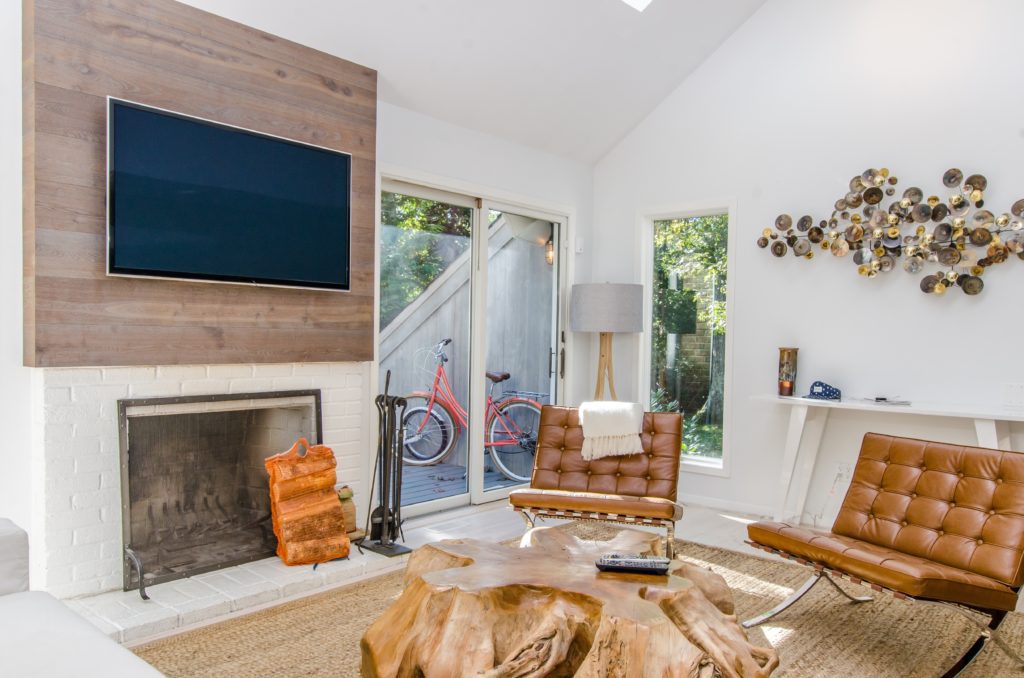Making the decision to reduce your carbon footprint is not only vital for the future of the environment, it can also require a lot of work. Making those eco-friendly decisions every day isn’t always easy or convenient; that’s why it’s important to recognize and applaud your commitment to doing your part for Mother Earth.
With all of that in mind, finding more ways to go green can get tricky. You’ve committed to unplugging when you can and finding greener ways to commute to work, and you’re a recycling pro — now what?
Something you might not have considered is your fireplace. Fireplaces are a great way to keep you warm throughout those colder months, but what impact is it making?
Here are some ways to get your fireplace up to green speed:
Safety First!
Inspecting your fireplace is a great place to start. Finding areas that have been worn down (think items such as your chimney damper) with use and age are worth replacing at the very least to reduce heat loss. It’s also a good time to consider implementing or re-enforcing those fire safety practices. In order to protect your home from a devastating fire take the necessary precautions to keep you, your family, and home safe:
- Remove all potential fire hazards
- Replace all smoke alarms as needed
- Create a fire escape place with two exits
- Conduct family fire drills twice a year
Of course, working to make your fireplace more efficient is a valuable effort, but it’s also worth taking the time to ensure safety is your number one priority. Nothing puts a damper on a pleasant evening quite like a fire injury — or worse.
Getting Green
Now that your fire safety reminder is out of the way, let’s focus once again on making your fireplace more green. One of the most valuable resources for better fireplace efficiency ideas can be found on the United States Environmental Protection Agency’s, “Energy Efficiency and Your Wood-Burning Appliance” page. They list a number of useful, green options from a fireplace insert to the kind of wood you burn. They also suggest replacing your old, dated fireplace as new wood-burning appliances:
- Are 50 percent more energy efficient
- Save you money, time, and other resources
- Use 1/3 less wood fuel
- Reduce creosote build-up and chimney fire risks
- Reduce wood smoke pollution (carbon dioxide, methane, black carbon)
- Can prevent fireplace related health issues linked to cancer, asthma, and other serious conditions
Out With the Old
If you happen to be in the market to replace your old fireplace you might consider the highly efficient gas fireplace options available these days.
According to fireplace experts, “[One of the] advantages of gas hearth systems over wood-burning ones is the extreme increase in efficiency. You can use a heater-rated gas fireplace or stove as a dependable secondary, or perhaps even primary, heating source … When looking for a gas-fired unit, be sure to look for the ‘BTU’ rating. A BTU (British Thermal Unit) is a measure of heat energy, and as a general rule of thumb, 35,000 BTUs will provide sufficient heating for about 1,000 square feet.” While this is obviously a bigger cost than adding an energy-efficient plug-in, if you’re already looking to replace your old fireplace, it’s worth looking at some alternatives that are better for the environment and your home.
Finding ways to go green beyond the most obvious options takes work, but the payoff is worth it, and Mother Nature will certainly thank you. Whether you start out small with an insert or completely rejuvenate your space with an efficient fireplace, lessening your impact is valuable and will hopefully encourage others around you.
